INTRODUCTION
METHODS
Animals and MYR administration
 | Fig. 1Experimental protocols for sleep deprivation (SD)-induced memory impairment behaviors and myricetin (MYR) treatment in rats.Rats were divided into groups (n = 6–7 rats/group), then subjected to the indicated experimental protocols. OFT, open-field test; 8-arm RAM task, eight-arm radial maze task.
|
SD induction
8-Arm RAM task
MWM test
Open field test
Enzyme-linked immunosorbent assay to assess inflammatory mediator levels
Total RNA isolation and reverse transcription-polymerase chain reaction
Western blot analysis
Statistical analyses
RESULTS
Rats subjected to SD have reduced body weight and food intake
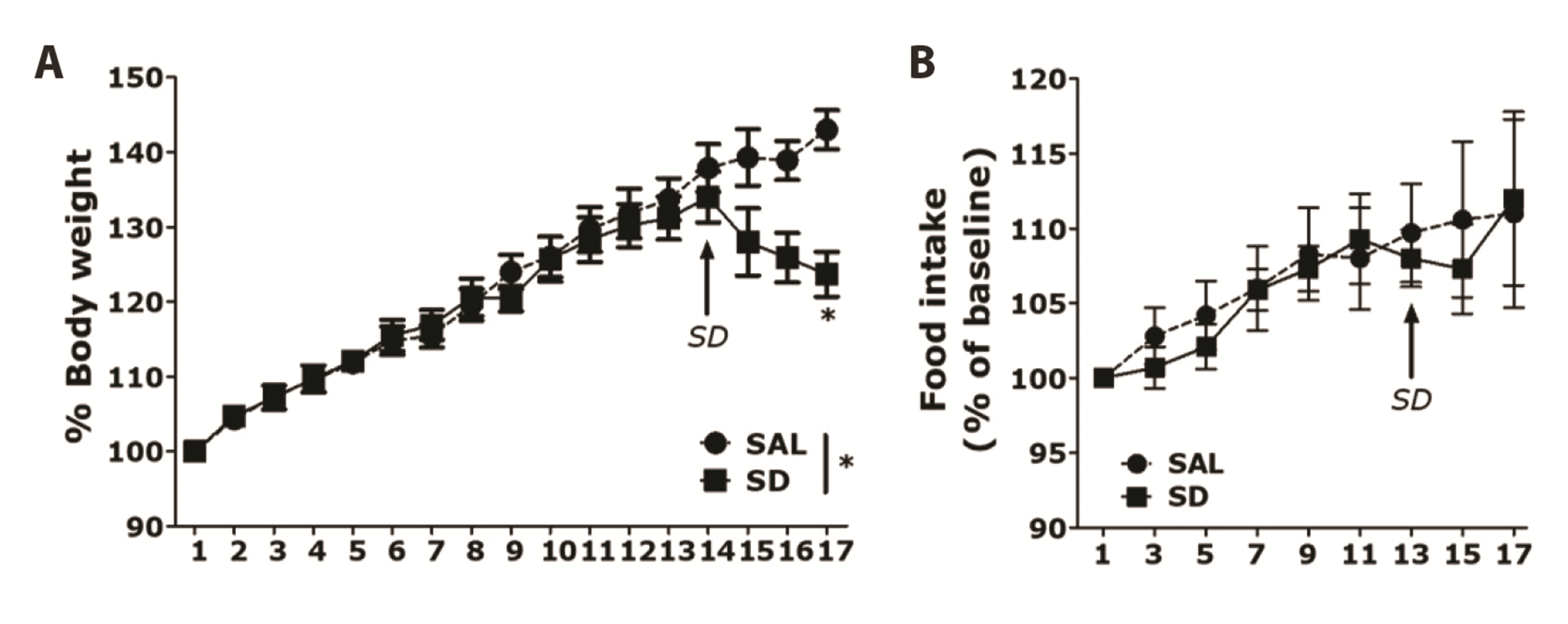 | Fig. 2Results of body weight and food intake analyses of rats subjected to 14 days of sleep deprivation (SD).(A) Body weight and (B) food intake were significantly lower in SD-exposed rats than in saline (SAL)-treated rats (significant main effect of SD exposure vs. control handling). Data are shown as means ± SEM. *p < 0.05 vs. SAL group.
|
MYR ameliorates impairments of cognitive and spatial memory in rats subjected to SD
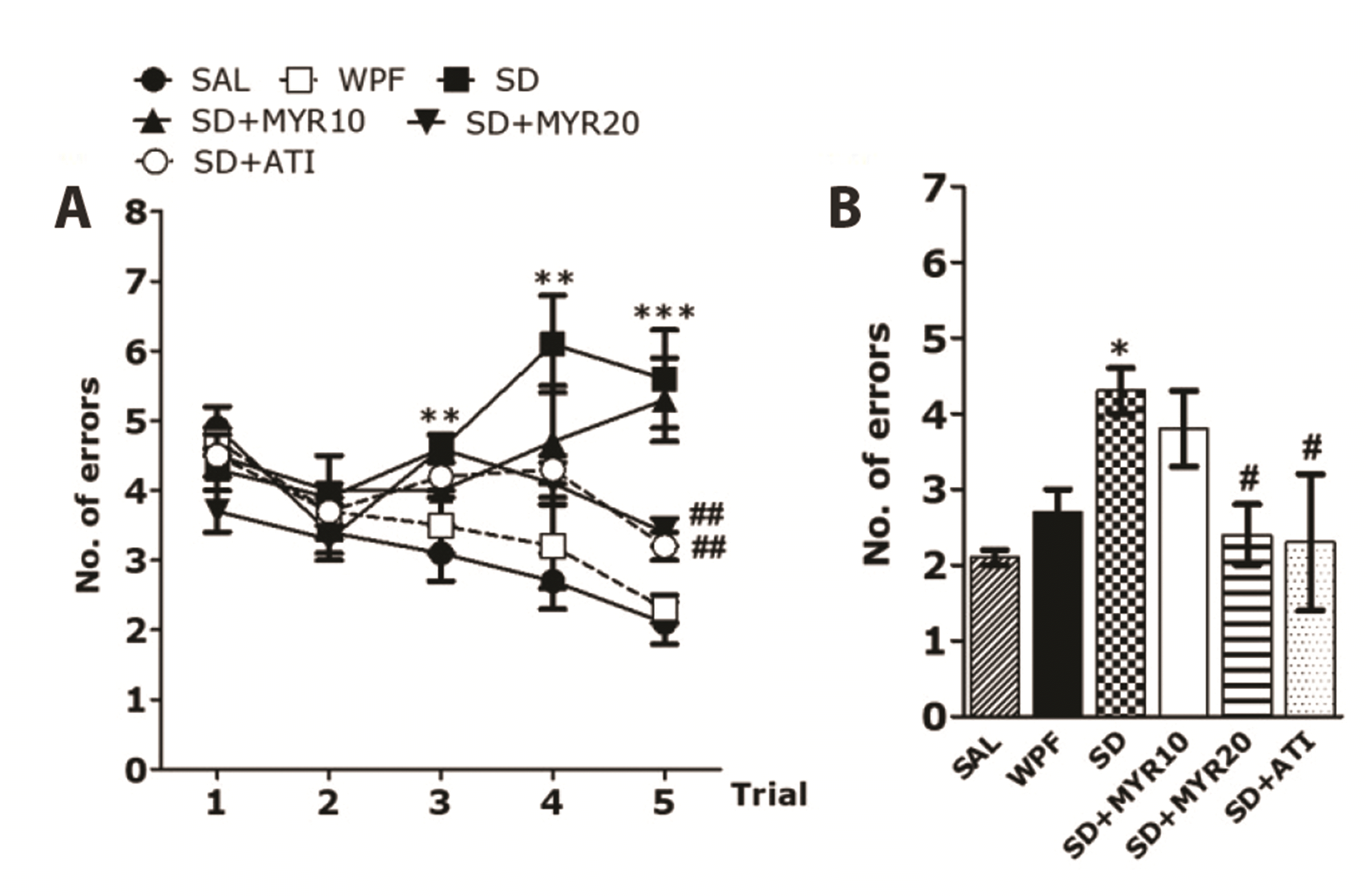 | Fig. 3Effects of myricetin (MYR) on the number of errors in the 8-arm RAM task in sleep deprivation (SD)-induced rats.The task was started during the second week after SD, and four trials were performed each day. (A) Comparison of rat performance during the acquisition phase and (B) short-term memory test. 8-arm RAM task, eight-arm radial maze task; WPF, wide platform; SAL, saline; ATI, alprazolam. *p < 0.05, **p < 0.01, ***p < 0.001 vs. SAL group; #p < 0.05, ##p < 0.01 vs. SD group.
|
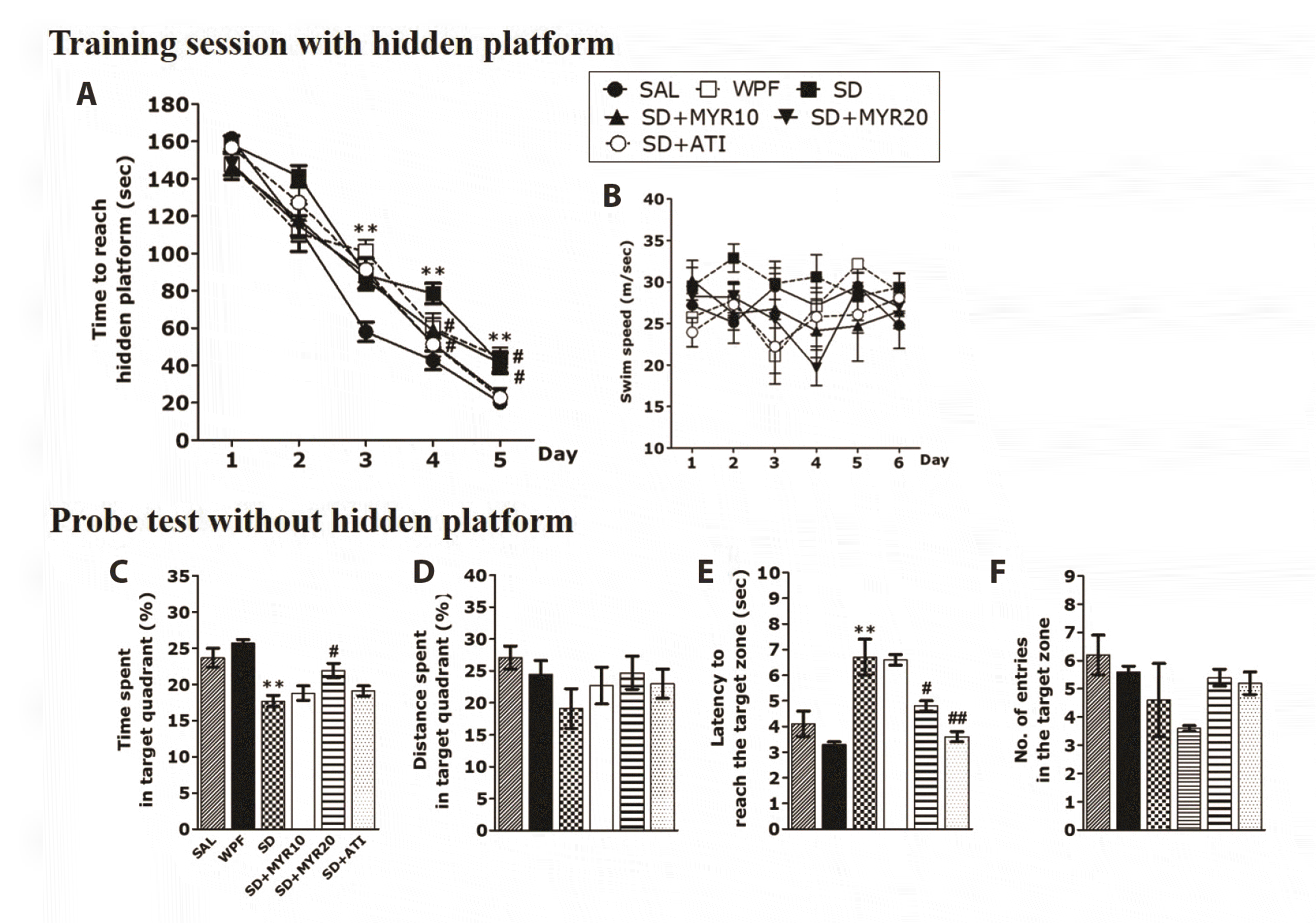 | Fig. 4The Morris water maze test was used to assess the effects of myricetin (MYR) on spatial learning and memory.Time to escape (latency) from the water onto a submerged platform during acquisition trials, (A) a submerged platform during acquisition trials, (B) swimming speed, (C) percentage of time spent in the target quadrant, (D) percentage of distance traversed in the target quadrant, (E) path efficiency to reach the target zone, and (F) number of entries to the target zone outcome measures. SD, sleep deprivation; SAL, saline; WPF, wide platform; ATI, alprazolam. **p < 0.01 vs. SAL group; #p < 0.05, ##p < 0.01 vs. SD group.
|
MYR decreases pro-inflammatory cytokine expression levels and increases anti-inflammatory cytokine expression levels in the hippocampus of rats subjected to SD
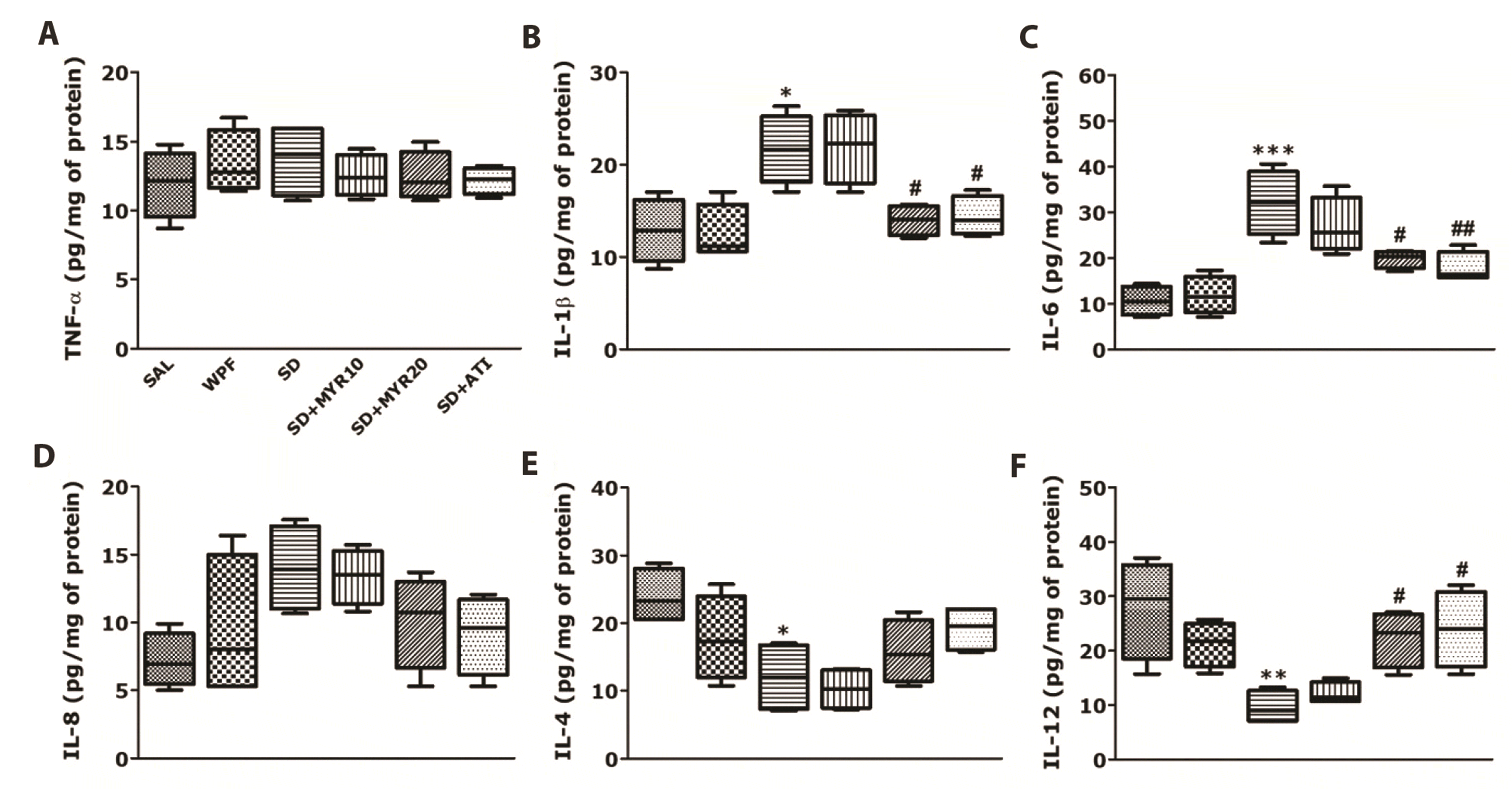 | Fig. 6Effects of myricetin (MYR) on tumor necrosis factor (TNF)-α (A), interleukin (IL)-1β (B), IL-6 (C), IL-8 (D), IL-4 (E), and IL-12 (F) concentrations in the hippocampus of rats exposed to sleep deprivation (SD), determined by ELISA analysis.SAL, saline. *p < 0.05, **p < 0.01, ***p < 0.001 vs. SAL group; #p < 0.05, ##p < 0.01 vs. SD group.
|
MYR increases mRNA expression levels of BDNF and TrkB in the hippocampus of rats subjected to SD
 | Fig. 7Effects of myricetin (MYR) on the expression of brain-derived neurotrophic factor (BDNF) and tropomyosin-related kinase B (TrkB) mRNA in rats with sleep deprivation (SD)-induced hippocampal impairment.(A) PCR bands on agarose gels and relative intensities are shown. Expression levels of BDNF and TrkB mRNAs were normalized to glyceraldehyde 3-phosphate dehydrogenase mRNA as the internal control, (B) activation of nuclear factor kappa B (NF-κB) in the hippocampus after MYR treatment. Western blot analysis of protein expression levels of NF-κB. SAL, saline; WPF, wide platform; ATI, alprazolam. *p < 0.05, ***p < 0.001 vs. SAL group; #p < 0.05, ##p < 0.01 vs. SD group.
|




 PDF
PDF Citation
Citation Print
Print


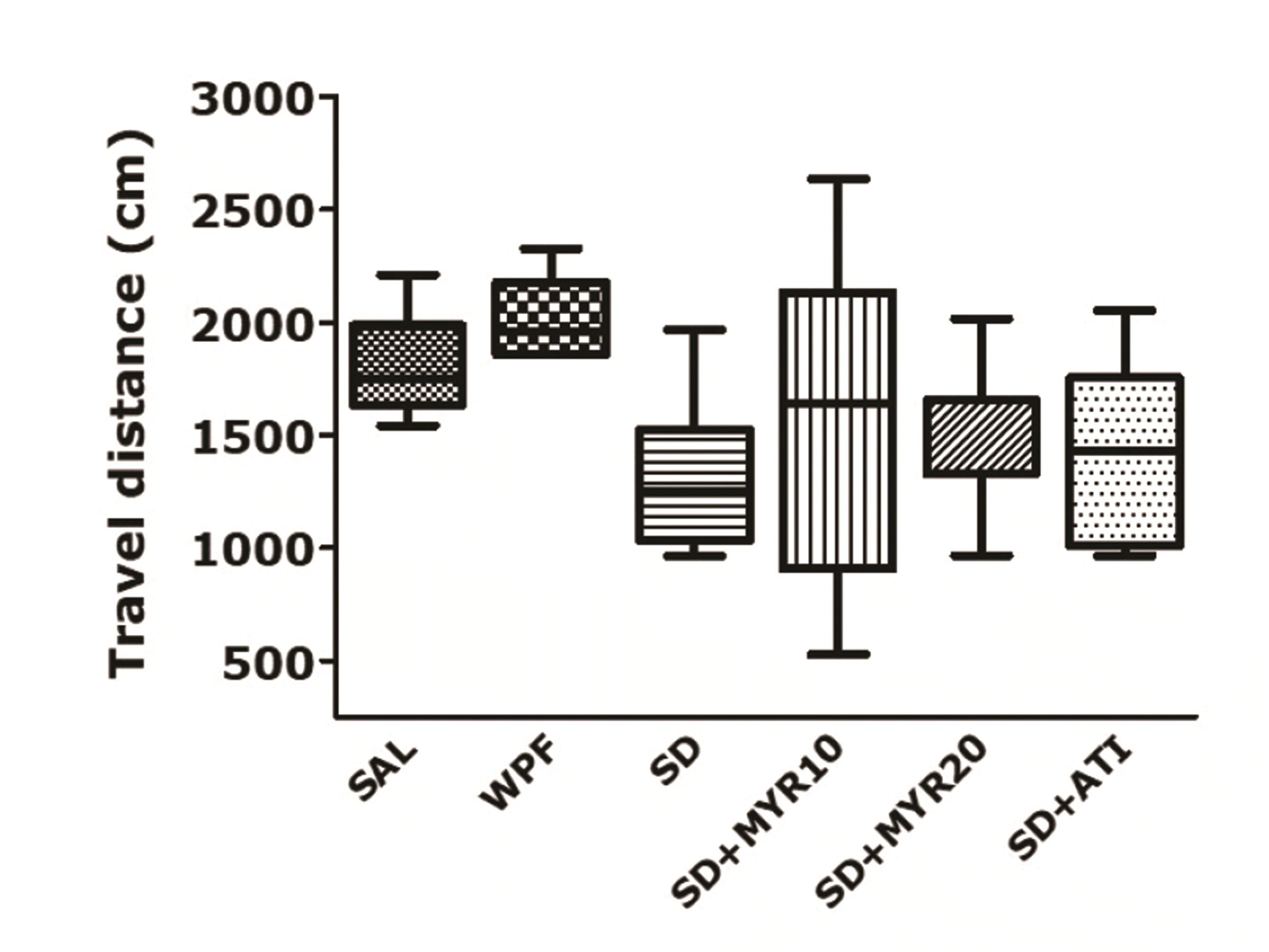
 XML Download
XML Download